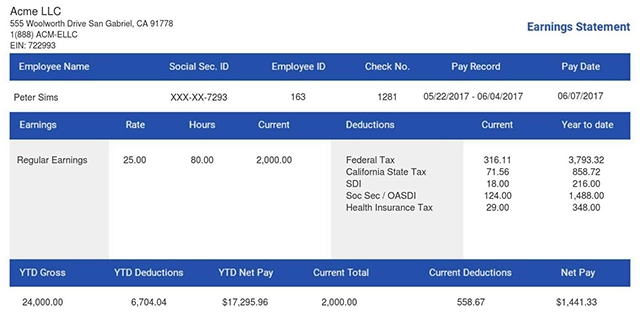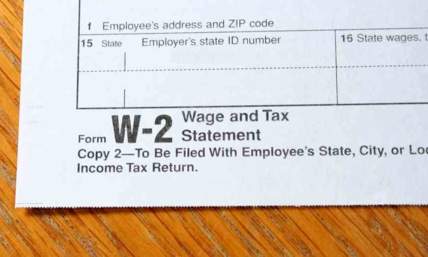The Difference Between Furlough and Layoff
In simple terms, a furlough is when your employer temporarily asks you not to work, or just to work for shorter hours. This happens without them ending your employment. Basically, you’re still considered an employee, but you’re not actively working or getting your full paycheck during this time.
Understanding this term really matters for both employers and employees. For employees, it’s about knowing the benefits involved and their next steps. For businesses, it’s about making decisions that help to save costs and balance employee retention.
In this guide, we’ll define furlough and how it works. By the end of this article, you’ll also understand the difference between furloughs and layoffs. This will help employees and employers decide what to do when it happens.
What Is a Furlough?
A furlough is typically a temporary break from work or a cut in your regular hours. It is usually without pay. Although you’re not being paid, you’re still employed. You can think of it as your job being on hold.
Furloughs can look different depending on the situation. In some cases, some employees will be told not to work at all for a particular period. It can be a few weeks or months. In other situations, they can keep working, but not so much.
For example, instead of working for five days in a work week, you work for three days. Therefore, whatever the case may be, the idea is that it’s temporary. The company hopes to return everyone to regular work when finances or operations improve.
Note that it is the same as unpaid vacation or voluntary leave. With an unpaid vacation, it is usually your choice to leave. This is the same for voluntary leave as well. For furloughs, on the other hand, the employer initiates them.
How Furloughs Work in the Workplace
Furloughs mostly happen when a company needs to save money or adjust. These are some of the common reasons for furloughs:
-
Budget cuts: When businesses run low on funds, reducing payroll costs temporarily can help them keep the business afloat.
-
Lack of work: Sometimes, the demand for a business could slow down. Therefore, this means there wouldn’t be enough tasks to keep everyone busy.
-
Emergencies: This could include natural disasters, pandemics, or other crises that can halt normal operations.
-
Seasonal slowdowns: For certain industries, like tourism, retail, or agriculture, work naturally reduces during certain periods.
To give real-world examples, you may remember the COVID-19 shutdown. This led to many businesses being unable to operate because of the lockdown. Many restaurants, shops, and airlines furloughed their staff during this time.
Another example is ski resorts; they might furlough their employees after the winter ends. Then, when it's the next snow season, they bring them back. The period for furloughs depends. While some could just last for a week or two, others can last several months. The length depends on how quickly the situation causing the furlough improves.
Furloughs vs. Layoffs
While both furloughs and layoffs may sound similar, they actually mean different things. Here is a simple breakdown:
-
Employment Status
While furloughs are temporary, layoffs mean permanent separation. For furloughs, you remain an employee of the company, and your position is still yours. However, a layoff means that your employment officially ends.
-
Benefits Eligibility
For furloughs, your employers could continue some of your employee benefits, like health insurance. On the other hand, if they lay off an employee, there are no more benefits. Although furloughed employees enjoy benefits, there is a possibility that they can lose them. This can be if their hours drop too low or the break extends too long.
Usually, employees don’t get paid during furloughs. However, you might still accrue vacation or sick days during this time. It depends on your company’s policy or local laws. The pay stops immediately for layoffs, and you won’t earn any more PTO.
-
Job Security
For furloughs, you’ll most likely return to work once the business is back operating. While for a layoff, there’s no chance that you’ll get called back. If you want to keep working, you’ll likely need to look for a new job right away.
Pros and Cons of Furloughs
Furloughs have their pros and cons. It applies to both employers and employees, and some of them include:
-
For Employers
Pros
-
Retain trained talent: Instead of losing their skilled employees completely, furloughs allow companies to keep people. These employees are in the company’s good books. Therefore, they can always bring them back when business improves.
-
Avoid rehiring costs: Handling recruitment, onboarding, and training can be quite expensive. Furloughs mean an employer wouldn’t have to start this process again.
Cons
-
Risk of losing top employees: Even though the employees are technically still staff, it may not be long. They may look for and find other jobs during the furlough.
-
Reduced morale: Knowing your pay or hours have been cut can make employees feel undervalued or insecure.
-
For Employees
Pros
-
Keep your job title and ties to the company: You're still employed, which helps with stability. It also helps you have future career references.
-
Potential to keep benefits: Many employees who are on furlough still receive benefits like health insurance, depending on company policy.
-
Eligibility for unemployment benefits: Furloughed workers can often apply for unemployment benefits during their leave. This, however, varies by state.
Cons
-
Financial strain: Not getting paid during furloughs can make budgeting tough.
-
Uncertainty about duration: Uncertainty about when you'll go back to your regular work can be tough. It can drain you emotionally and financially.
-
Risk of losing benefits: If your hours drop, you might lose your health or retirement benefits.
How Employers Decide Between Furloughs and Layoffs
Sometimes, employers may be faced with a situation where they have to decide whether to give a temporary break or completely lay off employees. While they decide, they’d need to consider certain factors:
-
Assessing the Duration of the Break: Employers start by looking at how long they expect the slowdown or crisis to last. If the dip in business is short-term, a furlough might be better. However, a layoff is more practical if it seems long-term or permanent.
-
Evaluating Financial Health and Staffing Needs: Employers would need to check the company’s cash flow, reserves, and payroll budget. They’d need to consider whether the business can continue to pay employee benefits during the break. They’ll also need to think about whether they need fewer people. If it’s a short-term cost issue, furloughs could. It might not be so if it’s the other way round.
-
Employee Preferences and Communication: Some employers create surveys or speak with their employees to understand their situation. For example, an employee may prefer a temporary break with unemployment benefits. They’d prefer this over losing their job entirely.
Tips for Employees on Furloughs
Here are some tips for you if you’re currently on furlough or planning to go on one soon:
-
Check Your Benefits Status: First, know what you’re still entitled to as an employee on furlough. Some employers keep offering health insurance, retirement contributions, or other perks. Others do not. Reach out to your HR to understand and get enough clarity.
-
Consider Unemployment Options: Many furloughed workers qualify for unemployment benefits. This is even if they still have a job waiting for them. Try to apply early so that you can avoid any delays.
-
Use Downtime for Skills Training: Furlough might feel like a long break. But it’s a perfect time to improve your skills. Take an online course, update your certifications, or learn a new tool relevant to your field.
-
Get Ready Financially for a Long Furlough: Anything can happen, so you need to be ready. Try to budget accordingly. Don’t overspend, set aside emergency savings, and avoid taking on unnecessary debt.
In Summary
Furlough can be uncomfortable, so you should understand it properly. It’s not the same as being laid off; instead, it is only a temporary break that helps businesses manage. It gives them an opportunity to handle tough financial or operational challenges and keep their employees. During this time, employers and employees must communicate properly. Employers should communicate openly about the timelines, expectations, and benefits. As an employee, also ask questions to avoid any form of confusion later.
Employers should be transparent about any changes in their employees’ pay and benefits. Employees should also keep track of every detail for their own records. This is where we come in with our accurate and professional paystub generator. It makes it easier for everyone to be aware of any changes. Try using our tool now!














